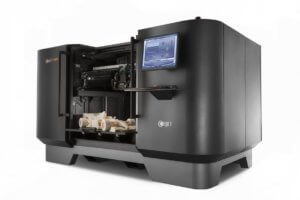3-D PRINTING MAY BE ABLE TO LEND A HELPING HAND FOR WORKERS’ COMPENSATION RECIPIENTS

With advances in technology, 3-D printing may be a new option for recipients of workers’
compensation benefits. 3-D printing involves making three dimensional objects from a digital file. By making a virtual design, one is able to take an image and bring it to 3-D life.
3-D printing has become a well-accepted method of manufacturing. The technology has
revolutionized the medical and health care industries as it has the ability to create prosthetics, dental implants, casts and even hearing aids.
Imagine the following: John works at a printing company. His job consists of passing reams of paper through a paper cutter. One day, John is running paper through the cutter when his hand suddenly slips and is amputated by the paper cutter.
John would be a candidate for workers’ compensation benefits. His medical bills and lost wages would be high due to the amputation. Most likely John could not return to his job without his hand and he would have to find another job.
With 3-D printing technology, John may be able to get a prosthetic hand that would allow a quicker recovery time and allow John to return back to work. 3-D printing would allow John to have a cost-effective and customized prosthetic in a fraction of the time.
There are many benefits to 3-D printing over other forms of prosthetics. For one, virtually no
materials are wasted. The process is also very flexible. There are many different types of “ink” that a 3-D printer can take including fiberglass, aluminum, fabric, and even living tissue. Additionally, the design can be changed by simple online software.
As with all new technology, research and testing is key. Not everything will be perfect at first, so fresh ideas will take some perfecting. It is also inevitable that many black market 3-D printers will arise and lack the rigorous testing methods the large manufacturers are subjected to. Another potential issue deals with latent defects. The technology may not always reveal defects immediately. In fact, some defects may take years to discover. Without risk, there can be no reward. 3-D printing has opened up many doors and created products that were unimaginable several years ago.
3-D printing continues to grow and adapt to the needs of the market. The technology is constantly improving. The possibilities for people injured at work and in accidents are endless.
Bernard D. Nomberg
Nomberg Law Firm
Article courtesy of our friends at Nomberg Law Firm, Birmingham, AL Workers’ Compensation, Personal Injury, and Social Security Disability Lawyers http://www.nomberglaw.com/| 205-930-6900
Photo credits courtesy of 3dprint.com

